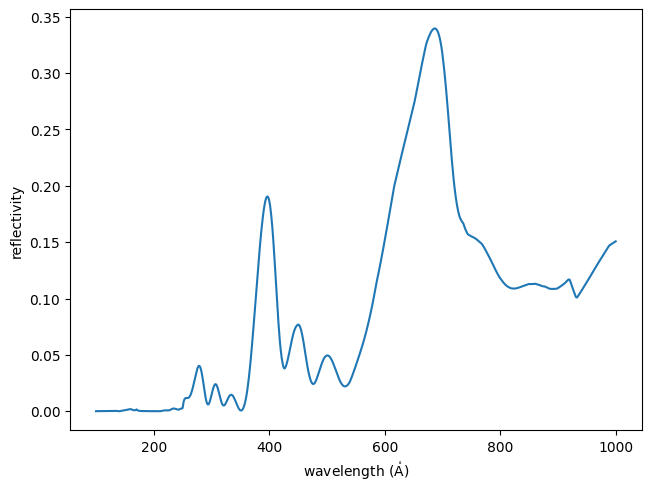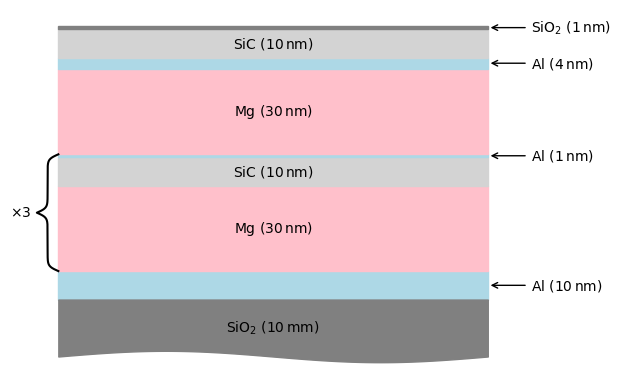multilayer_design#
- esis.flights.f1.optics.gratings.materials.multilayer_design()#
The as-designed multilayer coating for the ESIS diffraction gratings. This coating is based on the design outlined in Soufli et al. [2012].
Based on the analysis of Rebellato et al. [2018], this model uses Kortright and Windt [1988] for the silicon carbide optical constants, and Vidal-Dasilva et al. [2010] for the magnesium optical constants.
Examples
Plot the reflectivity of the coating over the EUV wavelength range.
import matplotlib.pyplot as plt import astropy.units as u import astropy.visualization import named_arrays as na import optika from esis.flights.f1.optics import gratings # Define an array of wavelengths with which to sample the efficiency wavelength = na.geomspace(100, 1000, axis="wavelength", num=1001) * u.AA # Define the incident rays from the wavelength array rays = optika.rays.RayVectorArray( wavelength=wavelength, direction=na.Cartesian3dVectorArray(0, 0, 1), ) # Initialize the ESIS diffraction grating material material = gratings.materials.multilayer_design() # Compute the reflectivity of the grating multilayer coating reflectivity = material.efficiency( rays=rays, normal=na.Cartesian3dVectorArray(0, 0, -1), ) # Plot the reflectivity vs wavelength fig, ax = plt.subplots(constrained_layout=True) na.plt.plot(wavelength, reflectivity, ax=ax); ax.set_xlabel(f"wavelength ({wavelength.unit:latex_inline})"); ax.set_ylabel("reflectivity");

Plot a diagram of the multilayer stack
with astropy.visualization.quantity_support(): fig, ax = plt.subplots() material.plot_layers( ax=ax, thickness_substrate=20 * u.nm, ) ax.set_axis_off()

- Return type:

